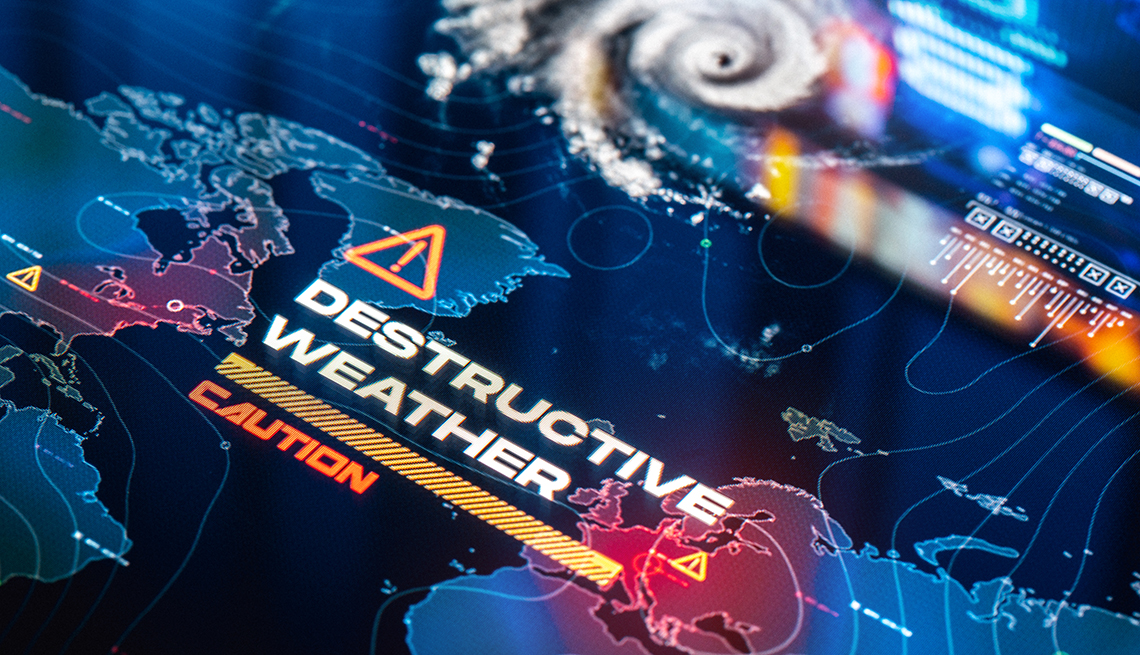
- Select a language for the TTS:
- UK English Female
- UK English Male
- US English Female
- US English Male
- Australian Female
- Australian Male
- Language selected: (auto detect) - EN
Play all audios:
5. MAKE SURE YOUR PHONE’S EMERGENCY ALERTS are on. These text messages sent from national, state and local authorities are on by default on both Android and iPhone smartphones. Your test
alerts may not be enabled, but it’s a good idea to tap the toggle under your settings. To do so, Android users should go to SETTINGS | NOTIFICATIONS | ADVANCED SETTINGS | WIRELESS EMERGENCY
ALERTS | TEST ALERTS. If you have an iPhone, you can reach the toggle options by going to SETTINGS | NOTIFICATIONS | GOVERNMENT ALERTS, TEST ALERTS. 6. FOLLOW FEMA, THE AMERICAN RED
CROSS and first responders on your social media accounts so you’ll be tuned in to more real-time information after a disaster. 7. USE THE CLOUD, SECURELY, FOR IMPORTANT RECORDS. The
destruction of official documents during disasters can delay insurance payouts and other relief to help you recover more easily. So while you’re making paper copies for your emergency
financial first aid kit, place encrypted digital copies in online storage, too. Getty Images DO YOU HAVE AN EVACUATION PLAN? Create a plan to leave quickly before you need it, FEMA says.
1. LOOK AT EVACUATION ROUTES as you think about the types of natural disasters your neighborhood could face. Use a paper map as a backup. 2. KEEP A FULL TANK OF GAS if an evacuation order
seems likely. The nearest gas station may be closed during an emergency. 3. ARRANGE AN ESCAPE PLAN WITH FRIENDS if you don’t own a car. 4. DETERMINE A PLACE TO MEET if all your family
isn’t at home when you have to move out. 5. LEARN HOW TO TURN OFF electricity, natural gas and water in case an official in the area instructs you to do so to prevent fires in the aftermath
of extreme weather. 6. KEEP A GO BAG PACKED so you can get out quickly. 7. PREPARE A GO BAG FOR YOUR PETS, too. Make sure their ID tags are up to date and they have a microchip with
current information on file. Consider a GPS tracking collar. Ones that can pinpoint a location require a monthly subscription for the satellite service. Don’t leave your animals behind.
Jackson suggests that those who live in nursing homes or assisted living facilities speak with administrators about disaster plans, especially evacuation plans. Family members also should
ask about the establishment’s emergency preparedness. “Whenever possible, older adults should create a support network of family, friends, neighbors, community- or faith-based
organizations, human service providers and others who may be able to assist before and after an emergency or disaster,” he says. “It is critical that older adults discuss their needs with
their trusted support network before a disaster occurs.” _This story, originally published August 30, 2019, has been updated with new statistics and preparation tips._





